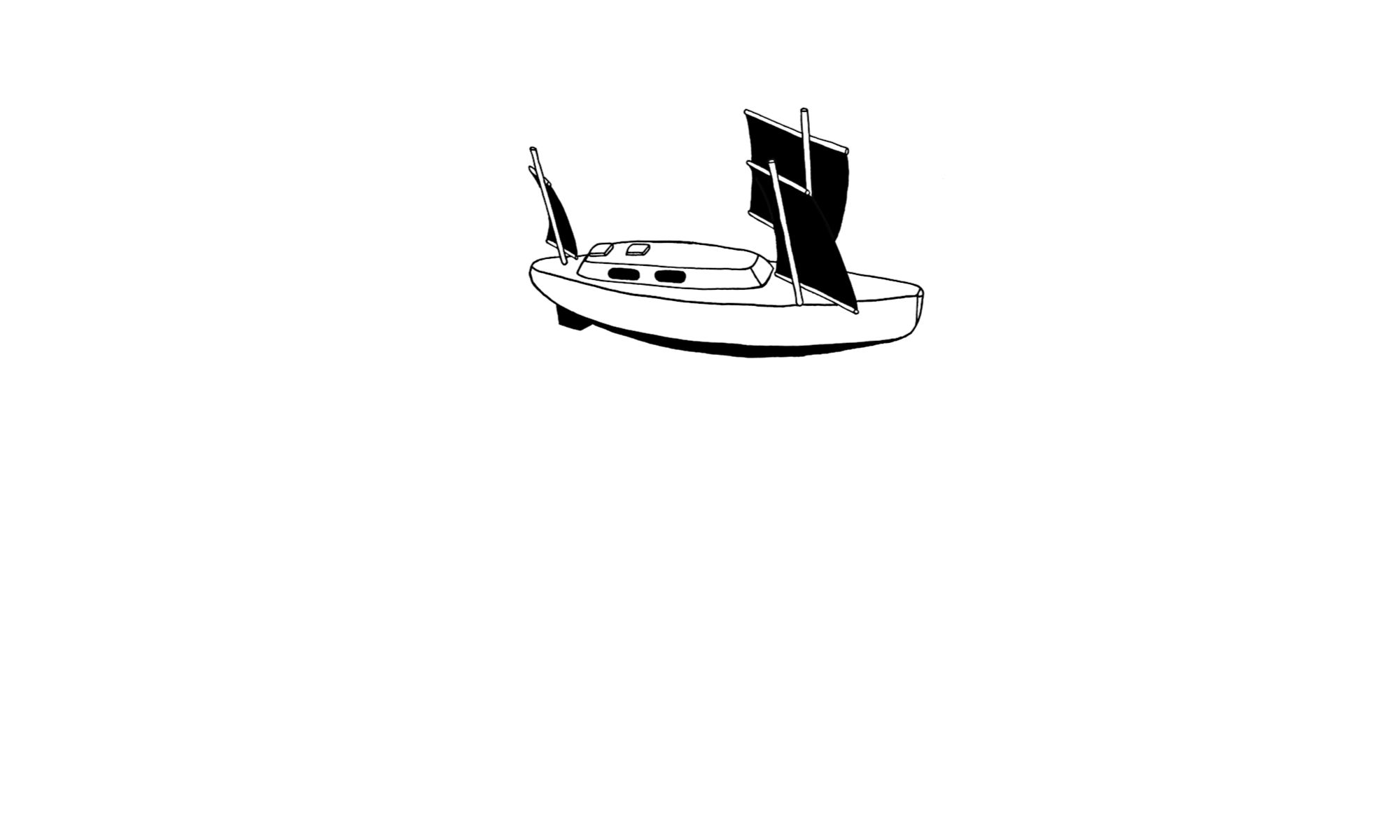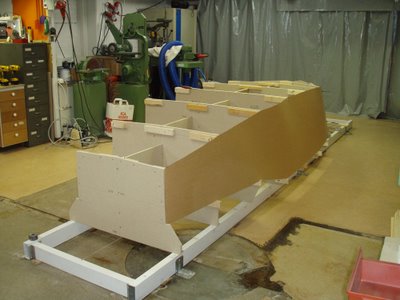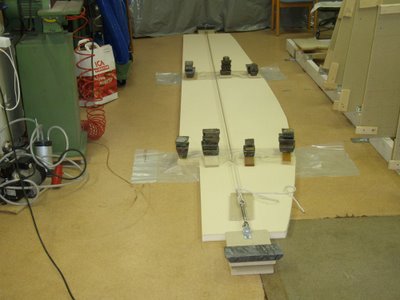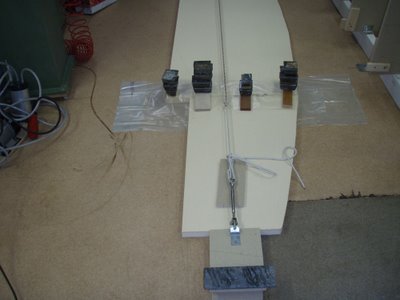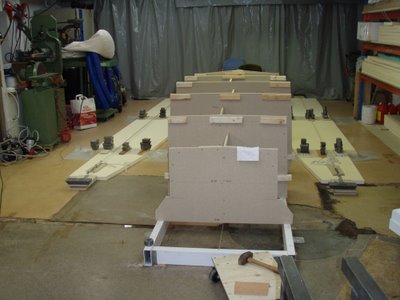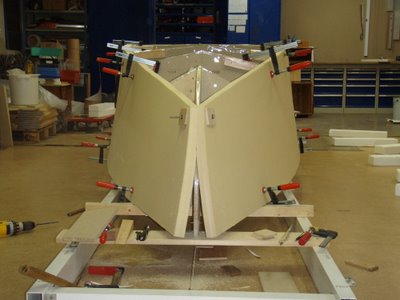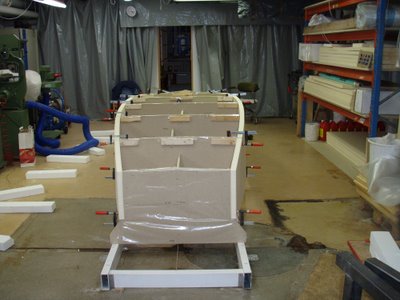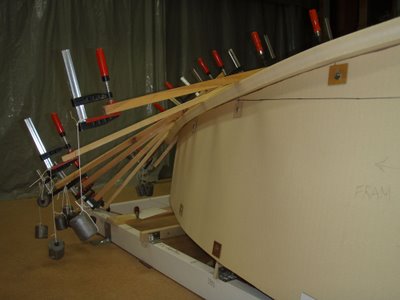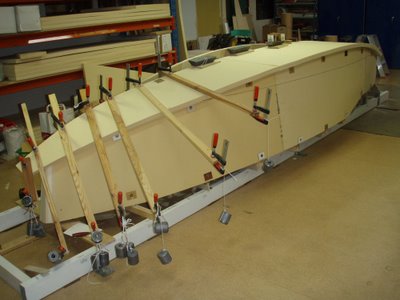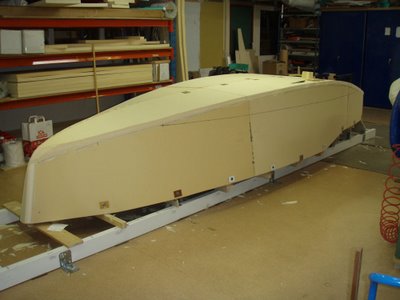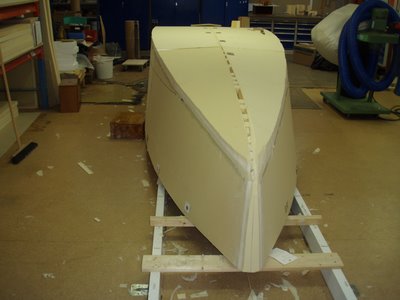Covering a small boat in Divinycell is mostly nice and easy work. Progress is quick. When the moulds are upp small pices of wood are scruved on to get grips for clamps and screvs. Then everything is sheated with plastic film to work as a release agent to avoid the epoxy to glue the Divinycell to the frames.
I used a roll of hewy paper to get the shape of the panels.
On the flour I cut out the shape and glued the Divinycell together to a long pice.
I used a rigging screw as a clamp to edgeglue the Divinycell pices.
The edgescarvs were held down with a lot of leadweights to get the panels straight.
Then I put them on. First with the help of a lot of clamps I got them into their places, then I screved them into the woodpices.
The back sidepanels was childs play.
But when doing the foreward bottom panels I had to watch my steps using patience and not rusching things. I let gravity work for me during lunchbreaks and overnight gradually increasing the weight. A small boat has smaller bending radius then a big one and I use very thick Divinycell 4cm wich is nearly 2 inches and its heavy duty quality 100 kilo kubik per meter. But its makes for a very strong boat, well insulated and unsinkable. qualitys I like.
The Divinycell is clued with NM-Epoxy edgewise to at the sherline its glued to the woodenpieces at the frames, then all screves and clamps can be removed.
Here there is still a few screvs left at the shear,
Now she is ready for the final shaping.
